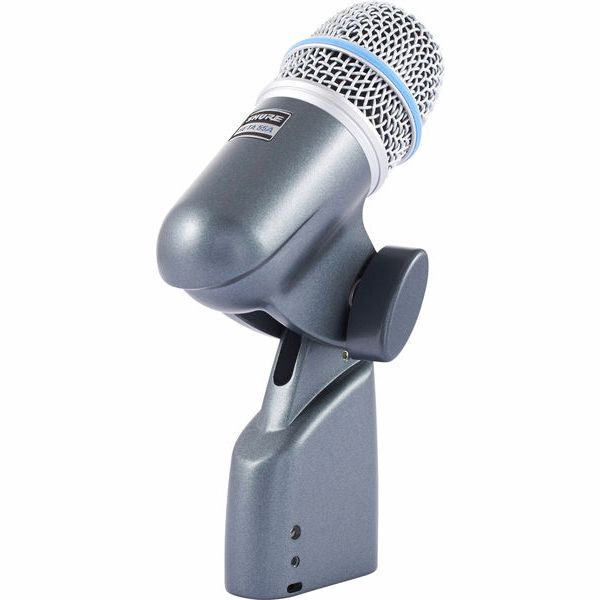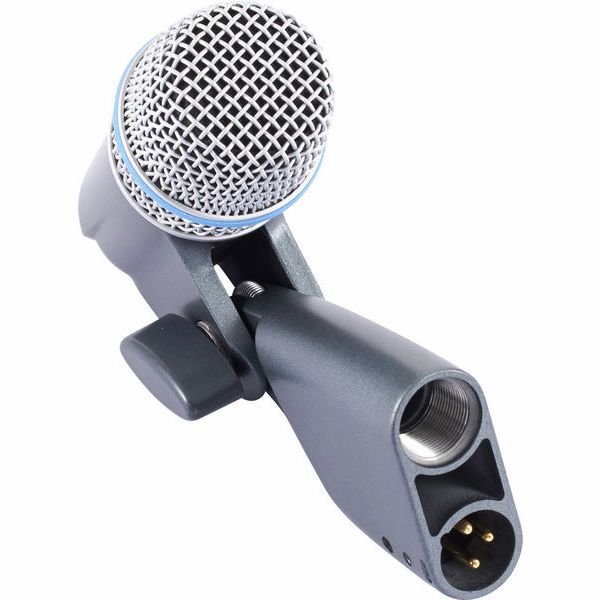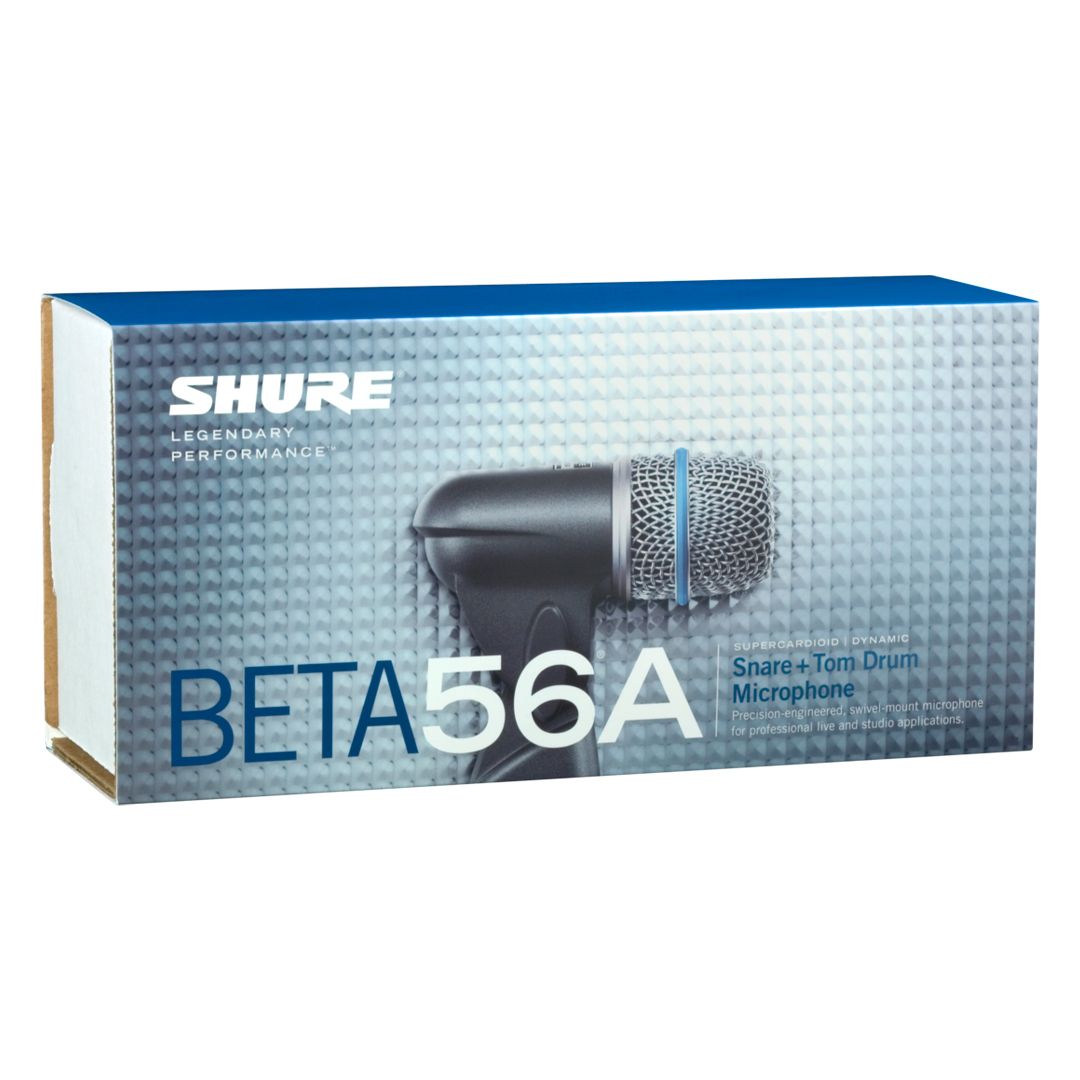Description
PRODUCT DETAILS
What is the Beta 56A best suited to?
It’s a premium microphone that is ideally suited for the professional musician looking to mic up their snare and toms, either on stage or in the studio. It can also be used with other instruments such as guitar and bass amps, brass and a saxophone amongst others.
What are the Charactaristics of the Beta 56A?
The Beta 56A has a uniform supercardioid pattern for high gain before feedback and a superior rejection of off-axis sound. It includes a Neodymium magnet which gives the BETA56A a high signal-to-noise ration output. The built-in stand adaptor had a dynamic locking system and XLR connector which simplifies setup and provides greater flexibilty.
- Built-in stand adapter with dynamic locking system and XLR connector simplifies setup and provides greater flexibility
- Uniform supercardioid pattern for high gain-before-feedback and superior rejection of off-axis sound
- Compact design reduces stage clutters
- Hardened steel mesh grille resists wear and abuse
- Neodymium magnet for high signal-to-noise ratio output
- Advanced pneumatic shock mount system that minimizes transmission of mechanical noise and vibration
- Frequency response: 50 to 16,000 Hz
General Description
The Shure Beta 56®A dynamic microphone has a frequency response specifically tailored for drums and instruments. An extremely uniform supercardioid pattern provides high gain before feedback and excellent rejection of unwanted noise. An integrated, locking stand adapter, with XLR connector, simplifies mounting and adjustments.
Designed for professional sound reinforcement and studio recording, the Beta 56A features a hardened steel mesh grille, die-cast metal construction, and pneumatic shock mount system ideal for daily, rough use in performance environments.
Features
- Premier live performance microphone with Shure quality, ruggedness, and reliability
- Uniform supercardioid pick-up pattern for maximum gain before feedback and superior rejection of off-axis sound
- Tailored frequency response specifically shaped for drums, amplified instruments and horns
- Neodymium magnet for greater sensitivity and higher output
- Advanced pneumatic shock mount system that minimizes transmission of mechanical noise and vibration
- Dent-resistant, steel mesh grille and enamel coated die-cast metal construction resist wear and abuse
- Built-in stand adapter with dynamic locking system and XLR connector simplifies setup and provides greater flexibility
- Compact design reduces stage clutter
Applications
General Rules for Use
- Do not cover any part of the microphone grille with your hand, as this will adversely affect microphone performance.
- Aim the microphone toward the desired sound source (such as the talker, singer, or instrument) and away from unwanted sources.
- Place the microphone as close as practical to the desired sound source.
- Work close to the microphone for extra bass response.
- Use only one microphone to pick up a single sound source.
- For better gain before feedback, use fewer microphones.
- Keep the distance between microphones at least three times the distance from each microphone to its source (“three to one rule”).
- Place microphones as far as possible from reflective surfaces.
- Add a windscreen when using the microphone outdoors.
- Avoid excessive handling to minimize pickup of mechanical noise and vibration.
Applications and Placement
The following table lists the most common applications and placement techniques. Keep in mind that microphone technique is largely a matter of personal taste; there is no one "correct" microphone position.
| Application | Suggested Microphone Placement | Tone Quality |
|---|---|---|
| Tom-Toms | One mic on each tom, or between each pair of toms, 2.5 to 7.5 cm (1 to 3 in.) above drum heads. Aim each microphone at top drum heads. On double head toms, you can also remove bottom head and place a mic inside pointing up toward top drum head. | Medium attack; full, balanced sound. |
| Snare Drum | 2.5 to 7.5 cm (1 to 3 in.) above rim of top head of drum. Aim mic at drum head. | Most "snap” from drumstick. |
| Guitar & Bass Amplifiers | 2.5 cm (1 in.) from speaker, on-axis with center of speaker cone. | Sharp attack; emphasized bass. |
| 2.5 cm (1 in.) from speaker, at edge of speaker cone. | Sharp attack; higher frequency sound. | |
| 15 to 30 cm (6 to 12 in.) away from speaker and on-axis with speaker cone. | Medium attack; full, balanced sound. | |
| 60 to 90 cm (2 to 3 ft.) back from speaker, on-axis with speaker cone. | Softer attack; reduced bass. | |
| Brass & Woodwinds | Brass: 30 to 90 cm (1 to 3 ft.) away, on-axis with bell of instrument. | Bright, clear sound. |
| Woodwinds: 2.5 to 15 cm (1 to 6 in.) away, on-axis with bell of instrument. | Bright, clear sound. | |
| Bell of instrument 90° off-axis from front of mic. | Softer, mellow sound. |
Avoiding Pickup of Unwanted Sound Sources
A supercardioid microphone has the greatest sound rejection at points 120° toward the rear of the microphone. Place the microphone so that unwanted sound sources, such as monitors and loudspeakers, are at these angles, not directly behind it. To minimize feedback and ensure optimum rejection of unwanted sound, always test microphone placement before a performance.

Recommended Loudspeaker Locations for Supercardioid Microphones
Proximity Effect
Unidirectional (cardioid) microphones progressively boost bass frequencies by 6 to 10 dB below 100 Hz when the microphone is at a distance of about 6 mm (1/4 in.) from the sound source. This phenomenon, known as proximity effect, can be used to create a warmer, more powerful sound. To prevent explosive low frequency sound during close-up use, the bass response gradually rolls off. This provides greater control and helps the user take advantage of proximity effect.
Using the Stand Adapter
The integrated stand adapter resists slipping when struck or bumped, yet permits adjustments without loosening the knob.
- Thread the microphone onto the stand.
- Before tightening the adjustment knob, adjust the stand height and position as necessary.
- Tighten the adjustment knob to lock the microphone in place. Do NOT use tools or overtighten

Specifications
Type
Dynamic (moving coil)
Frequency Response
50 to 16,000 Hz
Polar Pattern
Supercardioid
Output Impedance
EIA rated at150 Ω(290 Ωactual)
Sensitivity
at 1kHz,open circuit voltage
-51 dBV/Pa(2.8 mV)[1]
Polarity
Positive pressure on diaphragm produces positive voltage on pin 2 with respect to pin 3
Weight
Net
0.468 kg (1.6 lbs)
Connector
Three-pin professional audio (XLR), male, balanced
Housing
Silver blue enamel-painted die cast metal with hardened, matte-finished steel mesh grille
[1] 1 Pa=94 dB SPL

Typical Frequency Response

Typical Polar Pattern






